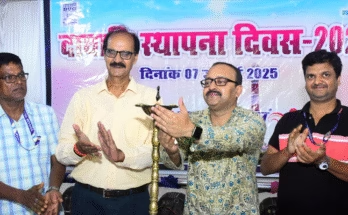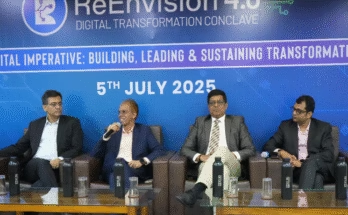 RNS I Dhanbad: The department of Mining Machinery Engineering of IIT (ISM) Dhanbad has organized a two-day workshop on the topic “Propulsion Systems for Electric and Hybrid Vehicles”.
RNS I Dhanbad: The department of Mining Machinery Engineering of IIT (ISM) Dhanbad has organized a two-day workshop on the topic “Propulsion Systems for Electric and Hybrid Vehicles”.
Kaushik Rajashekara, a Professor of Engineering at the University of Houston, USA, has delivered a talk; emphasis of the workshop was on the electrification of transportation to reduce emissions and improve fuel economy.
The transportation sector represents a significant fraction of total greenhouse gas emissions in many developed and developing countries. With the continued use of internal combustion engine vehicles, there will be continuing increase in CO2 emissions from the transportation sector.
According to the U.S. Energy Information Administration (EIA), the transportation sector is the second-largest consumer of energy in the U.S. behind electric power generation. Among the three big nations, the USA, China and India, the share of India in global CO2 emission is 2.5 gigaton (GT) while China share is 9.8 GT and of USA is 4.9 GT. Hence there is an increasing emphasis on the electrification of transportation to reduce emissions and to improve fuel economy.
A number of electric, hybrid, and fuel cell vehicles have already been deployed in many countries. In the workshop, detailed information about the electric and hybrid vehicles propulsion architectures, classification, operations was shared by Prof. Kaushik. The current trends and future technologies related to electric and hybrid vehicles are also discussed.
The hybrid vehicles are powered by two sources, and both power sources work together to spin the wheels. The electric vehicles use electric motors to propel the vehicles while the electric hybrid vehicles implement the two power sources in which one source would be an electric motor type.
The basic structure of an electrical drive system comprises of motor, inverter, converter, battery and charger. The motor is supplied with a 3-phase power supply. The DC supply of the battery is converted to 3-phase AC by an inverter. The final input to the motor is of variable frequency and variable voltage 3-phase AC power supply in order to control the torque so that the vehicle can be run at various speeds. The purpose of the converter is to bring the voltage up to a value required by the inverter while the charger charges the battery when the vehicle is parked.
The first electric vehicle was invented by Thomas Davenport in 1884 using the non-rechargeable battery. In 1859 lead acid storage battery was developed, and the first electric vehicle was exhibited in Paris in 1881 in an International exhibition. Because of heavy weight and starting problem, the electric vehicles disappear, and up to 1920, internal combustion engine becomes popular because of ease in starting. Also, the fuel stations are easy to set up as compared to the charging stations. Nowadays, because of pollution, emission of harmful gases to the environment, the popularity of electric vehicles and hybrid vehicles has risen. One gallon of petrol gives 19 pounds of CO2. A car running on petrol gives rise to 5 MT (metric tonnes) of CO2 per year.
General Motors introduced EV1 electric vehicles in 1990 which was front wheel drive with 57 bhp and 6600 rpm. The vehicle weight was 1000 kg, and the battery was 395 kg. The vehicle was made available from to 1996-1999. After that, its production was closed, and Hybrid vehicles such as Toyota Prius have been on the road since 1997. In the last ten years, a significant number of electric vehicles also have been deployed. There were nearly 7 million battery electric vehicles in use globally in 2020. Toyota has sold globally more than 15 million hybrid electric vehicles over the years.
In India, Reva electric car company, started by Shudarshan Maini in 1990 has unveiled a two-seater REVA electric vehicle in Bangalore in 2001. The company was the largest producer and exporter of electric passenger vehicles in the world for several years. The vehicle was popular in the foreign market but not in India.
In 2010, Mahindra bought a 55.2% controlling stake in the company, and by 2016, the company was branded as Mahindra electric mobility limited.
Nowadays, the use of hybrid vehicles comprising two power sources in which one power source is the motor has gain momentum. The vehicle may run up to 80 km on the motor without using fuel. The advantage of plug-in hybrid vehicles is that they can be used as fuel vehicles for certain distances. Auto companies have recently increased the emphasis on plug-in hybrid vehicles also.
A number of participants from academia and industry have attended this workshop. The workshop is coordinated by Professor L. A. Kumaraswamidhas, Professor Tanweer Alam, Professor R. R. Das and staff member Ravi Kant Pyarelal of the Mining Machinery Engineering Department.



